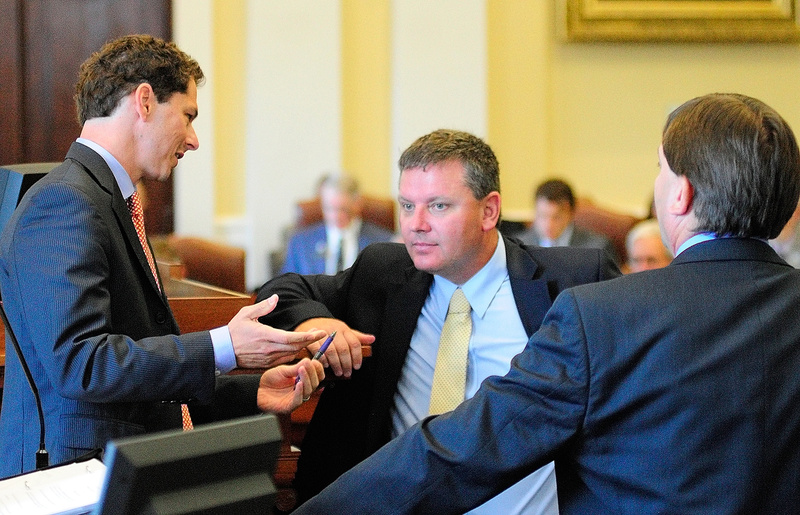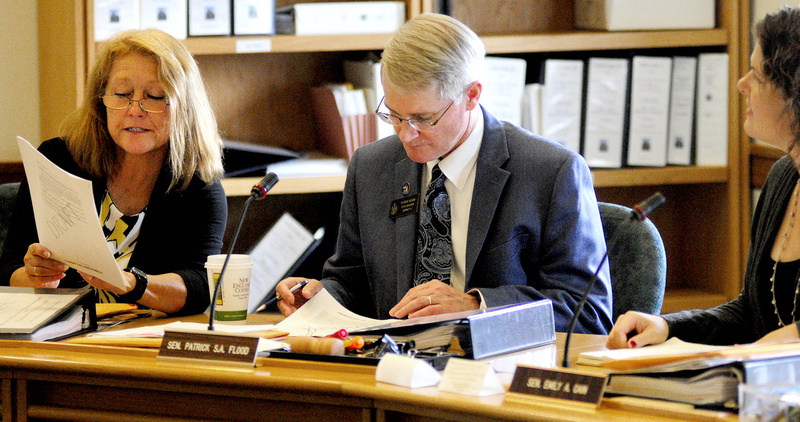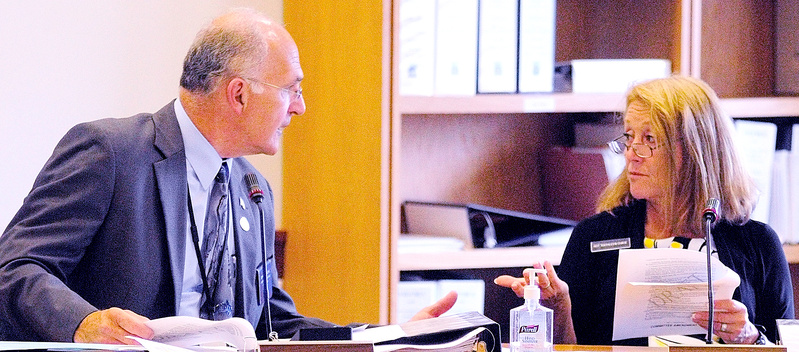AUGUSTA — Lawmakers on Thursday approved a series of bond proposals totaling nearly $150 million.
The five bonds will go to voters for final approval in November. The largest, a $100 million bond for transportation projects, includes $76 million for road and bridge upgrades and another $24 million for developments such as the proposed rail extension to connect the International Marine Terminal with Eimskip, the Icelandic container shipping company.
The transportation bond was pushed by Gov. Paul LePage, who insisted that the majority of state borrowing go to transportation. The governor agreed to sign off on the bonds earlier this month after a high-profile standoff with Democratic legislative leaders. Democrats supported the transportation bond, but they wanted to use their legislative majority to ensure that the next round of state borrowing includes money for other areas, including higher education.
Democrats didn’t get everything they wanted. Two-thirds of the Legislature is required to put a borrowing proposal before voters, meaning Republican votes were required. While Republicans have supported nontransportation bonds in the past, the caucus indicated early on that it would back LePage’s demand that most of borrowing go toward transportation.
The stalemate ended earlier this month when the governor told Democratic leaders that he’d support a set of bonding proposals that didn’t exceed $150 million.
The deal resulted in $35.5 million for capital projects at higher education facilities. The majority of the spending, $31 million, is split between classroom and science laboratory upgrades within the University of Maine System and Maine Community College System. The rest, $4.5 million, will go to science facilities at the Maine Maritime Academy.
The money, if approved by voters, will address partially the steadily increasing needs in either of the education systems. Ryan Low, the legislative liaison for the University of Maine, told lawmakers in August that rapidly aging infrastructure put the system in a position such that “projects pick us instead of the other way around.”
Earlier this year, Low submitted public testimony that the university system had a $770 million backlog in facility needs.
Community college system officials have said the $15.5 million it could receive would help expand and improve classrooms, upgrades that would help the system bring in more students from its waiting lists.
Another bond proposal would provide $14 million for the Maine National Guard, including $11 million for facility maintenance and repairs. A National Guard Association of Maine official told lawmakers earlier this year that the bond would bridge a funding gap within the Military Bureau that led to outdated facilities. In the past, the bureau had sold obsolete armories to fund such projects, but officials told lawmakers that there were few left to sell.
Included in the $14 million is $3 million to buy 6,000 acres of training land for the Army National Guard. The Guard now conducts exercises on a series of small parcels that are suitable for individuals or small crews, but not large-scale training operations.
The dearth of a large-scale staging area has forced the Guard to perform some training operations in Gagetown, New Brunswick, where it has conducted exercises since 1971. In 2006, the Canadian facility was the subject of scrutiny after claims by about 45 guardsmen or their families that veterans had developed illnesses related to the previous use of the herbicide Agent Orange at Gagetown.
An independent study later found that the facility was safe to use.
If approved, the transportation bond would give the Maine Department of Transportation flexibility to fund priority projects. The department publishes a list of such projects on its website.
Some in the capital area include:
• Rebuilding 0.4 mile of Western Avenue in Augusta between Edison Drive and Prescott Road — $5.6 million
• Resurfacing 9.7 miles of Route 3 in Augusta, Vassalboro and China — $2.2 million
• Resurfacing 0.8 mile of Hospital and Stone streets (both Route 9) in Augusta — $1.6 million
• Resurfacing 6.5 miles of Route 8 in Augusta, Sidney and Belgrade — $1.2 million
• Resurfacing 5.1 miles of Route 197 in Richmond and Gardiner — $896,000
• Resurfacing 6.7 miles of U.S. Route 202 in Monmouth and Winthrop — $1.4 million
• Resurfacing 5.7 miles of Route 126 in Whitefield — $1 million
The transportation department also publishes an interactive map of priority projects located throughout the state.
Send questions/comments to the editors.





Comments are no longer available on this story